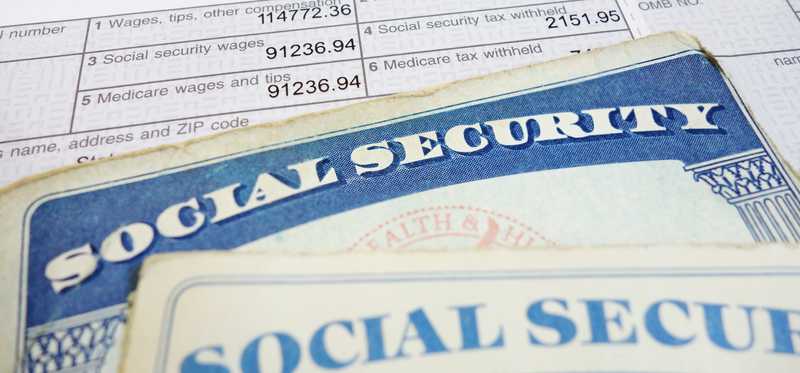The 9 Most Common Ways Americans Spend Their Money

The 9 Most Common Ways Americans Spend Their Money
Where we spend the most
According to the Bureau of Labor Statistics, the average American household shells out a little over $57,000 each year between the necessities of life and the luxuries that make life worth living. That’s some real money, and particularly if you want to get ahead in life, you need to know where your own money is going and why.
After all, just because other people are spending money on something doesn’t mean you need to spend money on it. And even if you do, the difference between winding up broke and winding up rich is largely based on spending less to free up more of your money to invest. With that in mind, here are the nine most common ways that Americans spend their money.
ALSO READ: The 20 Biggest Ways Americans Waste Money
Previous
Next

1. Housing -- $18,886 (33.0%)
Clocking in at around one-third of a household’s expenses is the housing itself. Most people are willing to spend a substantial portion of their income on living in a comfortable dwelling. In addition, the relative ease of getting long-term fixed-rate loans on housing makes it fairly easy to predict your annual costs of owning a home and budget the rest of your costs around it.
As the largest line item in most peoples' budget, it’s also the one where finding savings will likely have the biggest impact on your future. When looking for a place to live, consider not just the cost of owning or renting, but the "all in" costs including utilities, maintenance, upkeep, and taxes. Generally speaking, the bigger the house, the larger those other costs are as well, on top of the rent or mortgage payment.
To save costs here, focus more on what you need out of your home, rather than on getting everything on your wish list. With more financial flexibility by keeping your housing costs down, you’ll likely find yourself happier in the long run than you would be by stretching your budget to get that perfect house.
Previous
Next

2. Transportation -- $9,049 (15.8%)
The next largest significant expense in most Americans’ budgets is transportation. For most of us, that’s the cost of buying or leasing a car, insuring, fueling, and maintaining it. For those urban jungle dwellers, it’s the cost of public transit and those occasional Zip Car or Uber excursions when the bus or subway just won’t work out.
Here, too, keeping costs low can make a significant difference in your quest for financial freedom. Cars depreciate in value the moment you drive them off the lot, and as a general rule, the more expensive a car is to buy, the more expensive it probably is to insure, maintain, and repair as well.
Treat your car as a means to an end -- the end being getting from point “A” to “B” safely and reliably -- and you’ll improve your ability to keep your transportation budget in check. The less you spend on getting around, the more you’ll have available for enjoying yourself once you do reach your destination.
Previous
Next

3. Food -- $7,203 (12.6%)
We all have to eat, and food clocks in at the third biggest expense in most Americans’ budgets. Looking below the surface, “food at home” represents $4,049 of a household’s annual food expenses, while “food away from home” represents $3,154 of those costs.
While food costs represent less than 13% of a typical household’s budget, it’s the area within household necessities where quickly finding efficiency in spending is probably the easiest to do. After all, eating at home typically costs less than eating out would, and cooking from scratch generally costs less than pre-packaged and pre-prepared meals at home do.
Once you commit on a house or a car, it’s usually expensive and time consuming to change that decision, but eating is a small cost that you incur multiple times in a day. That makes food costs one of the easiest and most popular places to cut when a household is looking to shore up its savings.
Previous
Next

4. Personal insurance and pensions -- $6,831 (11.9%)
The good news is that saving for the future clocks in at the fourth largest "expense" in a typical household’s budget. The bad news is that the vast majority of that money goes towards paying Social Security taxes. While Social Security does help keep the typical retiree out of abject poverty, its payments are structured to be a minimal safety net more than a provider of a comfortable retirement.
If there’s a category where typical Americans would do well to increase their budgets, it’s this one. Not only does saving for the future help assure a stronger retirement, but it can help provide flexibility before retirement by improving a household’s overall financial position. After all, you don’t need to retire to be able to reap the benefits of having a solid household balance sheet.
ALSO READ: How Does the Average American Spend Their Paycheck?
Previous
Next

5. Healthcare -- $4,612 (8.0%)
Insurance takes up the biggest part of this budget line item, clocking in at $3,160, meaning just under $1,500 a year is spent by a typical household to cover the actual services cost of healthcare itself. This number varies wildly from family to family, and healthcare is one area of the budget where you don’t want to skimp, particularly if your very life depends on getting the treatment you need.
Still, there are often opportunities to cut costs in this line item. If you can use generic medications to treat illnesses instead of name brand ones, you can cut those costs substantially. Likewise, if you’re in reasonably good health, consider a high deductible insurance plan paired with a Health Savings Account. That combination can lower your health insurance costs today and help you build a ready supply of cash to cover your actual healthcare services costs in the future.
Previous
Next

6. Entertainment -- $2,913 (5.1%)
As the old saying goes, “All work and no play makes Jack a dull boy.” It’s important to have fun in life, and spending on entertainment can go a long way towards providing that fun. If you’re on-track financially, there’s nothing wrong with spending a little on a night on the town or a relaxing vacation to help recharge your batteries. Indeed, it’s better to have a little something set aside for fun in your budget than to repress your urge for entertainment and then wind up blowing through your cash.
While entertainment is important, it’s also a category where your spending can vary wildly. A little bit of research, a little bit of homework, and some aggressive couponing with the help of sites like Groupon can help you have all the same fun for less pain to your pocketbook.
A little bit of fun goes a long way, and when that fun fits within your overall financial plan, you just might find you enjoy it that much more when you don’t have to face the money hangover later.
Previous
Next

7. Cash contributions -- $2,081 (3.6%)
Cash contributions encompasses money spent in support of causes outside the home. This includes alimony, child support, and charitable donations. Court ordered payments are what they are, and failure to pay can lead to garnishments of your paycheck or even your Social Security benefits. So if you’re subject to those payments, it’s important to keep them high on your priority list.
The charitable side of the cash contributions spending bucket can do wonders for those you help -- and there’s reason to believe that giving back to those in need can help the giver as well. Still, if your compassion is larger than your budget allows, perhaps you can instead find the time to donate your services to a charity you admire.
Whether you give your time, your money, or a little bit of both, it’s admirable to help others. Just be sure to keep your charitable giving to a point where you’re still comfortable with the level of commitment you’re making relative to the rest of your financial plan.
Previous
Next

8. Apparel and services -- $1,803 (3.1%)
Just like we all have to eat, we all have to wear clothes, but there can be a wide range of costs associated with outfitting the family. From haught couture to the overstock rack at the outlet mall, you can easily go crazy buying the best of the best in clothing or get by with the minimum necessary to meet the standards of your workplace.
There’s an old saying that “clothes make the man.” To an extent that’s true, you clearly don’t want to skimp on a wardrobe that helps you be presentable to those you need to influence. Still, as you’re trying to fit clothes into your overall financial plan, your focus should be to dress for success in your endeavors, not to impress. And on that end, there’s nothing wrong with shopping last season’s styles and the overstock racks to find clothes that deliver on that expectation for less.
ALSO READ: The Definitive Guide on How to Manage Your Money
Previous
Next

9. All other -- $3,933 (6.9%)
This is a catchall category for costs that don’t fit neatly in the other eight major buckets. In total, this “all other” bucket would make up the sixth largest expenditure on the list. Still, it’s likely made up of a bunch of small expenses, none of which look significant to the typical household on their own.
Some of those expenses may be significant for you during a specific part of your life -- such as education costs. For the ones that really matter to you, go ahead and spend a portion of your money to cover those important priorities. For the ones that don’t, they’re great opportunities to find "low hanging fruit" of costs you can eliminate without a major impact on your life and overall happiness.
Previous
Next

It’s your money -- spend it well
As Charles Dickens famously wrote in David Copperfield: "Annual income twenty pounds, annual expenditure nineteen [pounds] nineteen [shillings] and six [pence], result happiness. Annual income twenty pounds, annual expenditure twenty pounds ought and six, result misery."
As you decide how to spend your money, recognize that finding financial stability revolves around focusing your spending on what really matters and having enough left over to invest for your future. Figure out which costs really matter to you, which you can cut back on, and which you’re better off avoiding all together, and use that knowledge to get yourself on the path to a better future.
The Motley Fool has a disclosure policy.
Previous
Next
Invest Smarter with The Motley Fool
Join Over Half a Million Premium Members Receiving…
- New Stock Picks Each Month
- Detailed Analysis of Companies
- Model Portfolios
- Live Streaming During Market Hours
- And Much More
READ MORE
HOW THE MOTLEY FOOL CAN HELP YOU
-
Premium Investing Guidance
Market beating stocks from our award-winning service
-
The Daily Upside Newsletter
Investment news and high-quality insights delivered straight to your inbox
-
Get Started Investing
You can do it. Successful investing in just a few steps
-
Win at Retirement
Secrets and strategies for the post-work life you want.
-
Find a Broker
Find the right brokerage account for you.
-
Listen to our Podcasts
Hear our experts take on stocks, the market, and how to invest.
Premium Investing Services
Invest better with The Motley Fool. Get stock recommendations, portfolio guidance, and more from The Motley Fool's premium services.